Embarking on the journey of teaching an older bird new tricks may seem like a daunting task, but with the right approach and a sprinkle of patience, it can be a rewarding experience for both you and your feathered friend.
Birds, known for their intelligence and adaptability, are never too old to learn. In this guide, we’ll delve into how to teach an old bird new tricks, exploring effective methods to engage and stimulate the minds of our seasoned feathered companions.
Whether you have a parrot, cockatiel, or any other avian companion, the principles of positive reinforcement, consistency, and understanding their unique preferences play crucial roles in the training process.
Join us as we unravel the secrets to unlocking untapped potential in older birds, fostering a deeper bond, and creating an environment where learning knows no age limits.
Get ready to witness your wise old bird spread its wings into new realms of skill and knowledge!
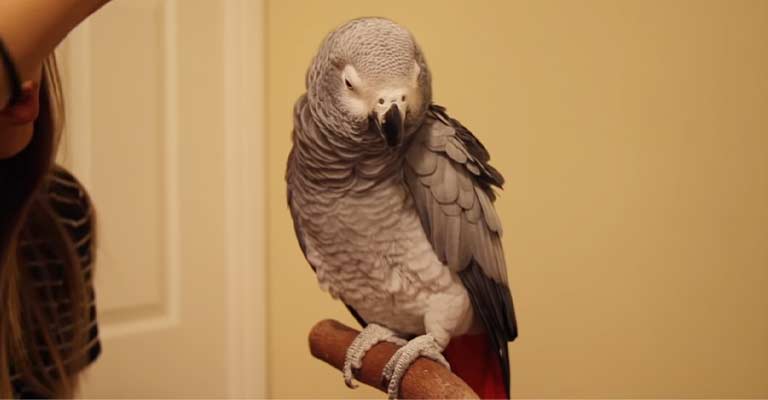
How to Teach an Old Bird New Tricks?
Teaching an older bird new tricks may seem like a challenge, but it’s a rewarding endeavor that strengthens your bond and stimulates your feathered friend’s mind.
Before diving into training, consider your bird’s history. Past experiences, living conditions, and previous interactions can influence their behavior.
Understanding their background provides valuable insights into their personality and any potential challenges during training.
Patience: The Key to Success
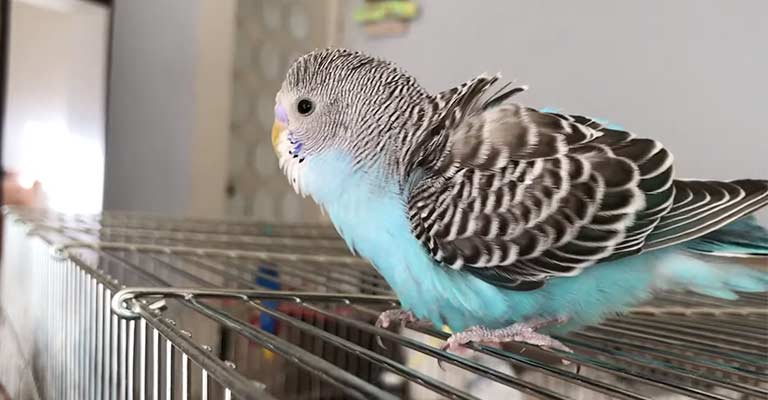
Older birds might have established habits, making patience crucial. Begin with realistic expectations and gradual progress. Celebrate small victories, reinforcing positive behavior with treats and praise. This positive reinforcement encourages your bird to associate learning with positive experiences.
Positive Reinforcement Techniques
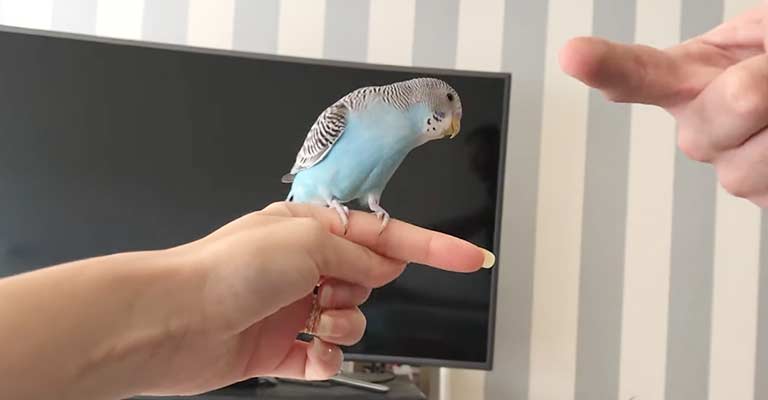
Use your bird’s favorite treats as rewards for desired behavior. This creates a positive association with the training process.
Birds respond well to positive vocal cues. Use an upbeat tone when praising them, reinforcing their understanding of the desired behavior.
Incorporate play into training sessions to make learning enjoyable. Interactive toys can be used as rewards, combining mental stimulation with fun.
Establishing Clear Communication
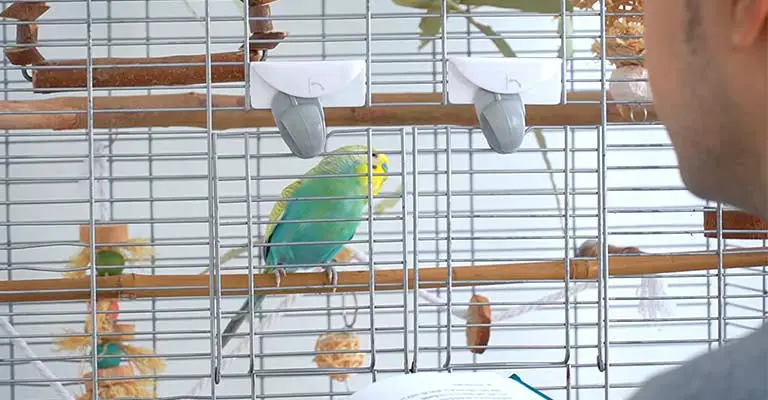
Communication is vital in any training regimen. Birds are observant and responsive to your cues, making it essential to establish clear signals for commands and expectations.
Choose simple, consistent commands for each trick. Repetition helps your bird associate specific actions with commands.
Birds are adept at reading body language. Use consistent gestures or movements along with verbal commands to reinforce your message.
Tailoring Training to Your Bird’s Personality
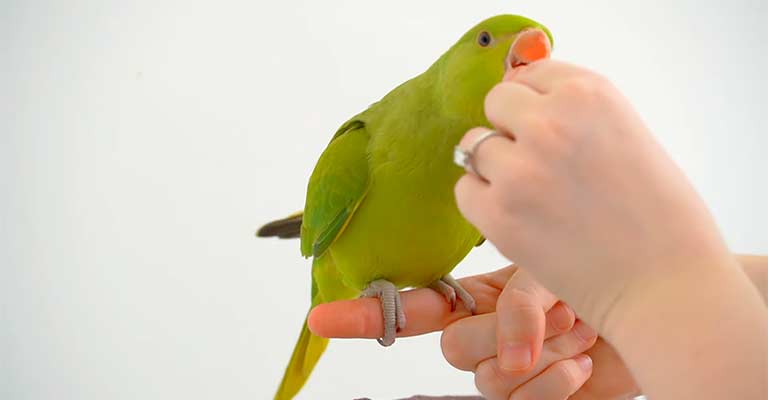
Every bird is unique, and tailoring training methods to their personality enhances effectiveness.
If your bird thrives on social interaction, group training sessions with other birds or involving family members can be beneficial.
For more independent birds, individualized sessions with focused attention might yield better results.
Simple Commands and Imitating Sounds
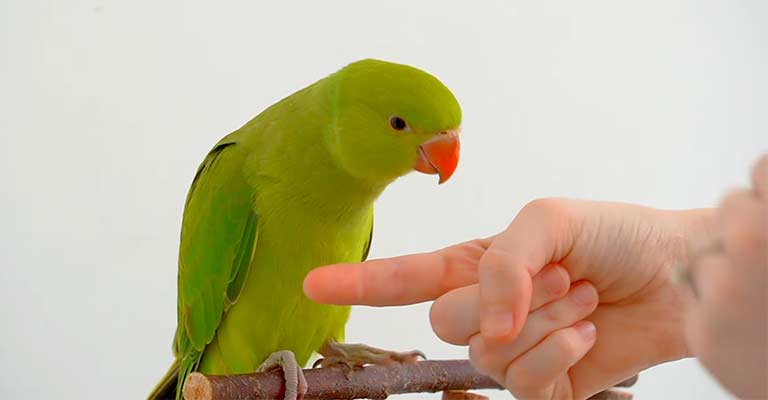
Start with basic commands like “step up” or “turn around.” Older birds may take time to adjust, so patience is key.
Birds are natural mimics. Encourage your bird to imitate sounds or words, gradually expanding their repertoire.
Use a target stick to guide your bird’s movements. This enhances their focus and facilitates learning more complex tricks.
Overcoming Challenges
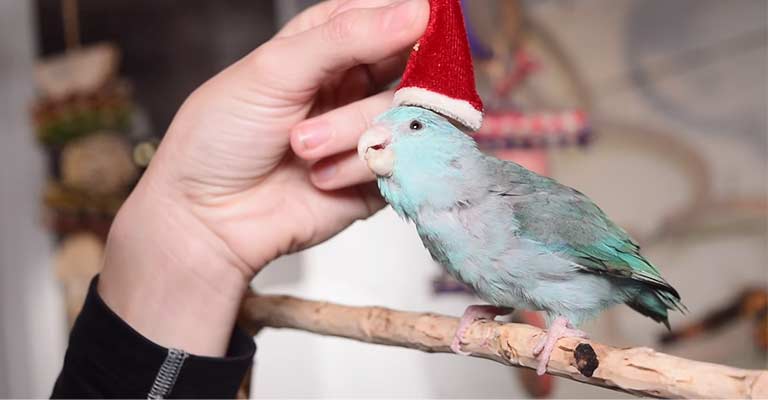
Older birds may be hesitant due to past experiences. Create a calm, secure environment, gradually introducing new elements to reduce fear.
Be mindful of your bird’s health. Consult with a vet to ensure they are physically fit for training activities. Recognize your bird’s limitations.
Pushing too hard can lead to stress. If a particular trick is challenging, revisit it later or modify your approach.
Building a Routine
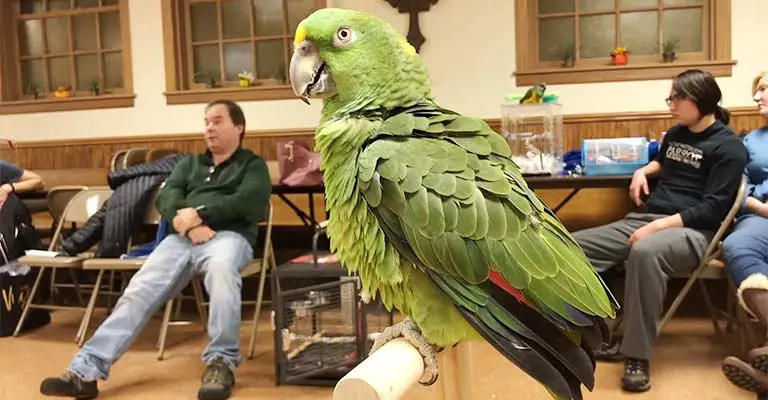
Consistency is crucial for successful training. Establish a routine with regular training sessions. Short, frequent sessions are more effective than prolonged ones. Birds thrive on routine, and a predictable schedule fosters a sense of security.
Celebrating Success

As your older bird progresses, celebrate their achievements. This can include verbal praise, extra attention, or their favorite treats. Positive reinforcement enhances the learning experience and strengthens your bond.
Enriching the Environment
A stimulating environment contributes to a bird’s overall well-being and receptiveness to training. Provide a variety of toys, perches, and activities to prevent boredom and encourage mental engagement.
If you encounter challenges or feel uncertain about training techniques, consider seeking guidance from avian behavior specialists or trainers. Their expertise can provide valuable insights tailored to your bird’s specific needs.
How To Tame An Old Bird?
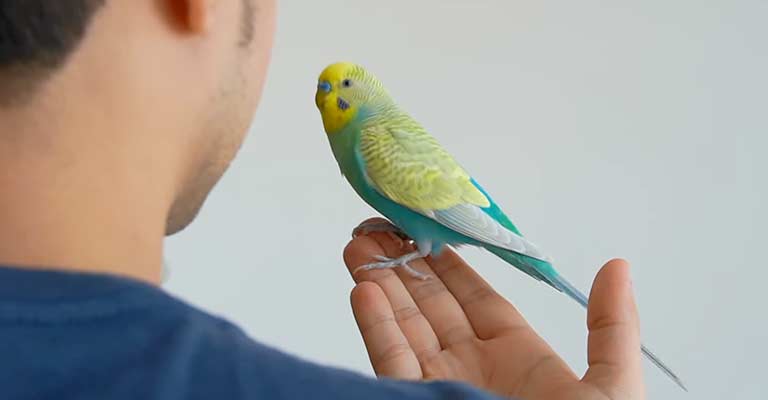
Taming an old bird requires patience, consistency, and a gentle approach. Whether you have a new pet bird or are working with a previously untamed bird, the process involves building trust and forming a positive bond. Here’s a step-by-step guide on how to tame a bird:
Create a Calm Environment
Begin by placing the bird’s cage in a quiet, low-traffic area of your home. Minimize loud noises and sudden movements, creating a serene atmosphere that helps the bird feel secure.
Observe from a Distance
Allow the bird to acclimate to its new environment without direct interaction initially. Spend time near the cage, talking softly and moving slowly to avoid startling the bird.
Offer Treats Through the Cage Bars
Win the bird’s trust by offering treats through the cage bars. Use a calm and soothing voice while doing so. This establishes a positive association between your presence and positive experiences.
Gradual Hand Presence
Once the bird is comfortable taking treats from your hand through the cage bars, slowly introduce your hand inside the cage without making sudden movements. Allow the bird to become accustomed to your hand’s presence.
Respect the Bird’s Space
Pay attention to the bird’s body language. If it shows signs of fear or discomfort, give it space and back off. Respect its boundaries, and proceed at a pace that aligns with the bird’s comfort level.
Associate Hand Presence with Positive Experiences
Continue to offer treats and speak softly while your hand is inside the cage. Gradually move your hand closer to the bird without touching it. The goal is to associate your hand with positive experiences.
Build Trust with Regular Interactions
Consistency is key. Spend time with the bird daily, gradually increasing the duration of interactions. Offer a variety of treats and engage in activities that the bird enjoys, such as playing with toys or offering fresh food.
Move Slowly
When you’re ready to take the next step, move slowly and deliberately. Open the cage door and allow the bird to decide when it’s comfortable coming out. Avoid making sudden movements that may startle the bird.
Hand Perch Training
Once the bird is comfortable being outside the cage, use a perch or your hand as an extension of its environment. Allow the bird to step onto your hand voluntarily. Use treats as positive reinforcement.
Respect Individual Pace
Every bird is unique, and the time it takes to tame a bird varies. Some birds may become comfortable quickly, while others may take more time. Be patient and let the bird set the pace.
Positive Reinforcement
Continue to reinforce positive behavior with treats, praise, and gentle interactions. This strengthens the bond between you and the bird, fostering a trusting relationship.
Avoid Punishment
Never use punishment or force in the taming process. Birds respond best to positive reinforcement and gentle encouragement. Punishment can lead to fear and hinder the bonding process.
Regularly handle and socialize with the bird to maintain and strengthen the bond. This helps the bird become more accustomed to human interaction.
If appropriate for the species, consider getting another bird as a companion. Some birds are social and thrive in pairs, making the taming process smoother.
FAQs
Can older birds learn new tricks?
Yes, older birds can definitely learn new tricks! While it might take more patience and a gradual approach compared to younger birds, the key is positive reinforcement and understanding your bird’s preferences.
How do I deal with a bird that seems resistant to training?
If your bird appears resistant to training, it’s essential to identify the cause. Consider factors like past experiences, fear, or health issues. Create a calm and secure training environment, be patient, and start with simple, positive interactions.
What are some easy tricks to start with for an older bird?
Begin with simple tricks like “step up” or imitating sounds. Target training, where your bird follows a stick, is also effective. Choose tricks that align with your bird’s personality and preferences. Celebrate small successes to boost their confidence and motivation.
How long should each training session be?
Training sessions should be short and focused, typically lasting 5-15 minutes. Birds have shorter attention spans, and frequent, brief sessions are more effective than longer ones.
Consistency is key, so aim for regular, daily sessions to reinforce learning and build a routine.
What if my bird doesn’t respond well to treats or rewards?
If your bird isn’t motivated by treats, explore other positive reinforcements such as verbal praise, favorite toys, or interactive play. Each bird is unique, so experiment with different rewards to find what resonates best with your feathered friend.
Adjust your approach based on their preferences to make the training experience enjoyable for both of you.
Conclusion
Teaching an old bird new tricks is a testament to the incredible adaptability and intelligence of our avian friends.
As we wrap up our guide, remember that the journey of education is a continuous one, and the rewards extend far beyond the tricks themselves.
The bond forged through learning is a powerful force that enhances the quality of life for both you and your feathered companion.
Celebrate the small victories, be patient in moments of challenge, and always approach the process with love and understanding.
The journey of teaching an old bird new tricks is not just about imparting skills but fostering communication, trust, and mutual respect.
So, spread your wings and soar into the world of avian education. Your old bird may surprise you with its capacity to learn, adapt, and continue evolving.
Cherish each moment of discovery, and may the lessons learned be a source of joy and connection for years to come.